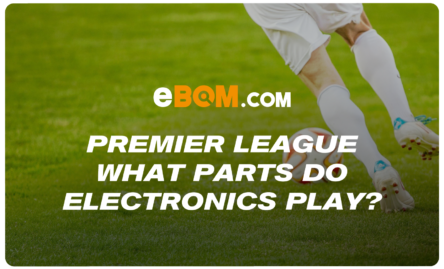Premier League – What Parts do Electronics Play?
Fans are certainly aware of how technology has improved their experience of sporting games such as football. We may not always notice how technology has changed the game itself. Technology has improved sporting games for the betterment of the league, coaches, players, and even the fans. The Premier League is the top level of the English football league system. Contested by 20 clubs across the country, it operates on a system of promotion and relegation. The Premier League was founded on 20th February 1992, and the seasons run from August to May. Stated by Wikipedia, The Premier League is the most-watched sports league in the world, broadcast in 212 territories to 643 million homes and a potential TV audience of 4.7 billion people. But what has this got to do with electronics? Electronics have come a long way since the first premier league match was broadcasted by Sky between Nottingham Forest v Liverpool. Believe it or not, there are hundreds of electronics which make up every successful Premier League match.
Sensors
Sensors play a huge part in all Premier League games – from training to analysing pitch temperature. Many footballers wear GPS vests to track and measure their performance on the pitch analysis metrics. In most cases, data such as total distance, top speed, number of sprints, sprint distance and power plays are recorded and analyses. But where do electronics come into this? Within the GPS devices there will be sensors which rely on transmitters and receivers to record and transfer data. Transmitters and receivers are electronic devices that manipulate electricity resulting in the transmission of data through the atmosphere. A transmitter consists of an oscillator that creates an AC carrier wave frequency.
The length of a pitch must be between 100 yards (90m) and 130 yards (120m) and the width not less than 50 yards (45m) and not more than 100 yards (90m) – according to BBC Sport. Many football pitches cost thousands of pounds a year to maintain due to regulations and of course safety. The grass’ ability to grow successfully on football fields depends on essential parameters such as the temperature, ph. balance and humidity of the soil. These wireless sensors are small, robust, and discrete which can transfer data to electronic devices such as tablets or mobiles.
LED Displays
LED displays play a huge part in football matches from advertisements, announcements and general lighting. LED display is the term used for an array of light-emitting diodes for a video display. These displays are usually used as billboards or store signs. LED displays have come a long way since they were first developed in 1968 by Howard C. Borden when they were primarily the colour red. LED displays are popular at football matches due to their ability to display clear, bright announcements and advertisements to be seen by all the fans.
Cameras
As most of you football fans will know, VAR is the term used for a video assist referee which is a match official referee who reviews decisions made by the head referee. State-of-the-art technology powers the VAR decisions which the league uses to monitor games and evaluate its officials. Many electronics such as cameras, LED displays, sensors and transmitters make up the VAR decisions and announcements at the games. Cameras play a huge role in fans experiences at the stadium and broadcasting from home. Advancements such as instant replay improved broadcast technology and made it easy for the fans and coaches to evaluate players and potential foul play. Not only this, instant replay has sped up the pace of games by ensuring each player is participating legitimately along with improving fan experience. Television has also led clubs to upgrade stadiums along with gigantic video displays to enhance the viewing experience.
Enclosures
An enclosure is a cabinet for electronic / electrical equipment such as mount switches, displays and knobs. The purpose of an enclosure is to prevent damage, electrical shocks, and manipulation on the product. Enclosures can vary from sizing depending on the measurements of the device inside. Enclosures play a huge role in many sports – especially sports which are conducted outside. Its important to keep expensive electronic equipment safe in harsh environments which is where enclosures come into play. To broadcast football matches, the club will purchase high quality, expensive cameras to ensure the best picture. To make certain there will be no tampering, weather damage or accidents with the cameras, they will be secured in a heavy-duty enclosure. Not only this, other important equipment such as speakers will be partially secured in an enclosure. In harsh environments such as the outside world, you never know what the weather will bring during sports matches (especially the UK) – that’s why its important to protect the electronic devices.
Telecommunication
Telecommunication is the term used for communicating over a distance via telephone, broadcasting, telegraph, or cable. This is essential during sporting matches such as football. The referee will have an electronic device (transmitter / receiver) in his ear where he can receive signals from. This is beneficial for the sporting game as he can be alerted of any foul play or important information.
By Amy Leary, Marketing Manager at eBOM.com










